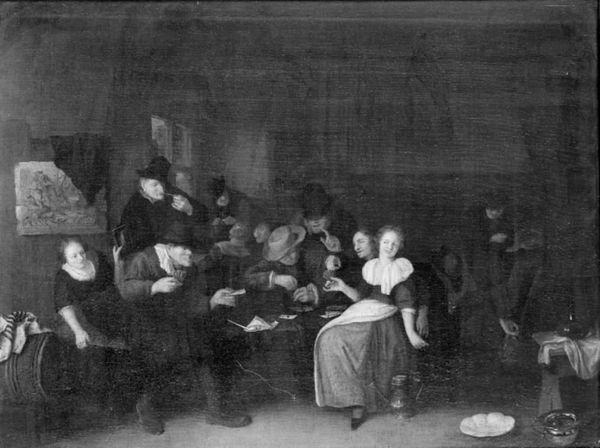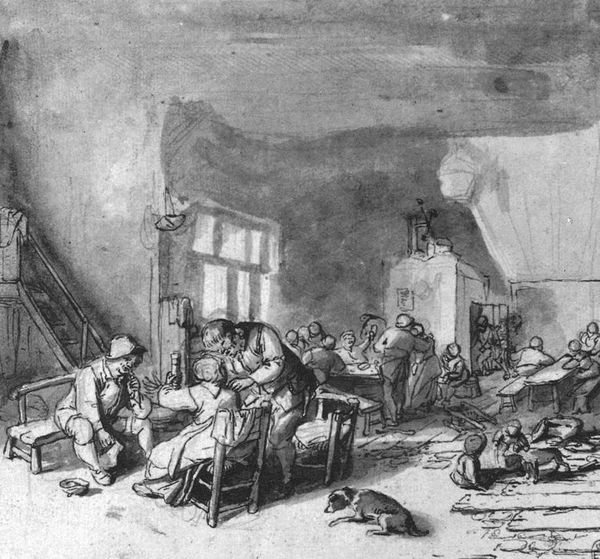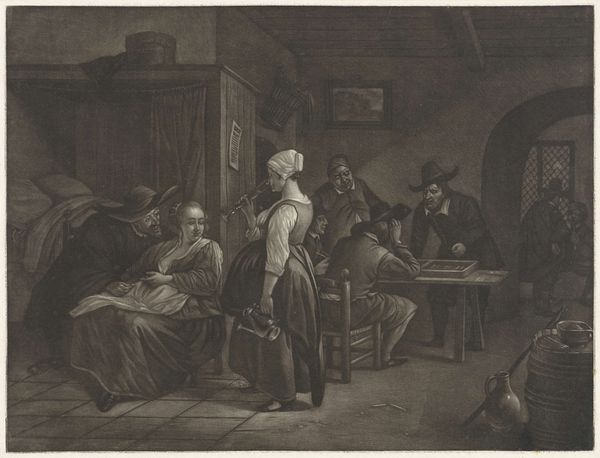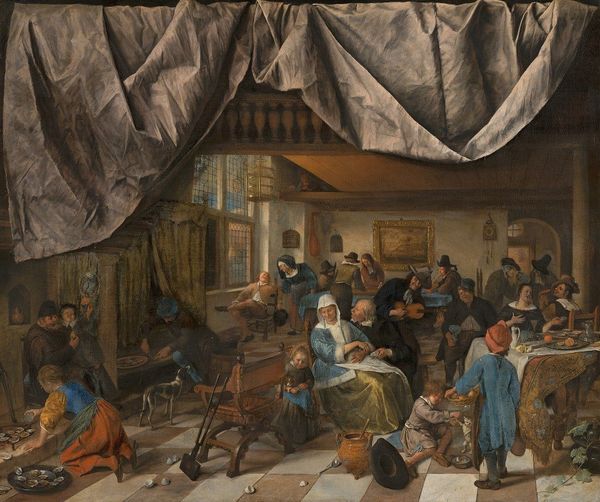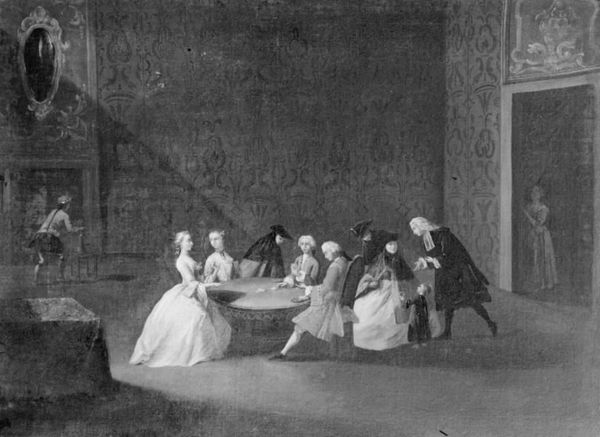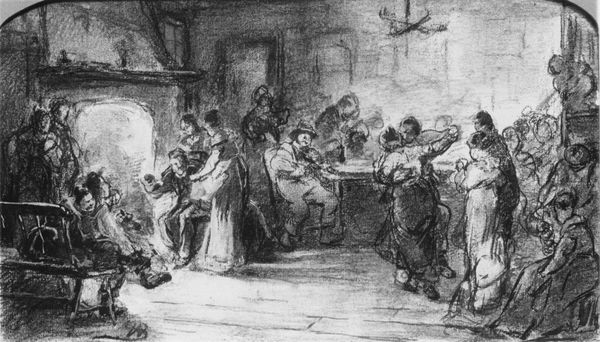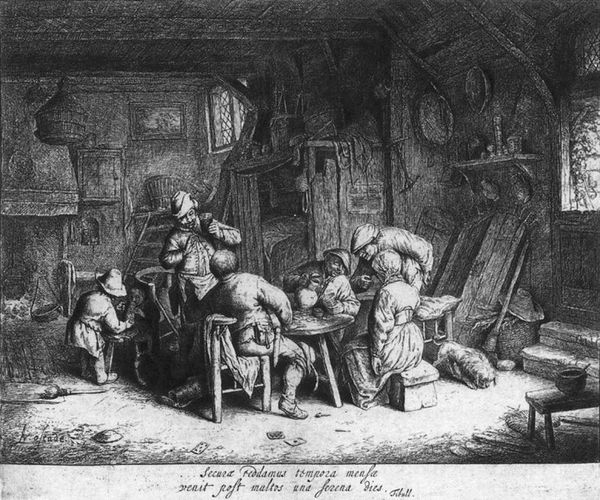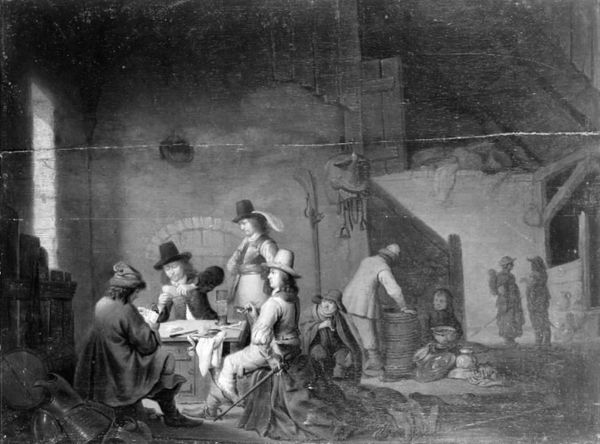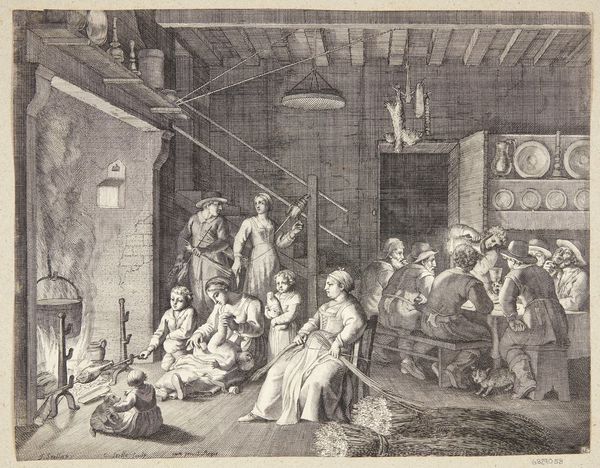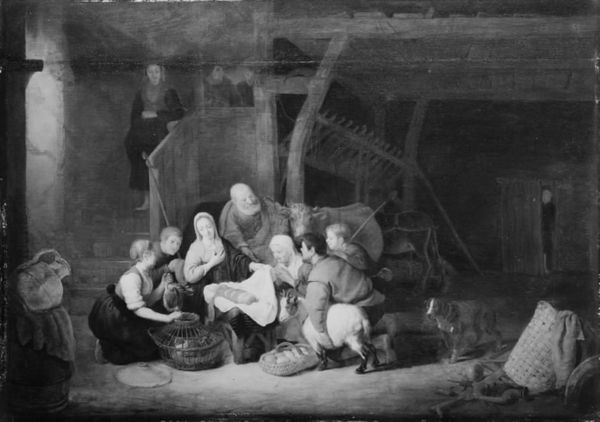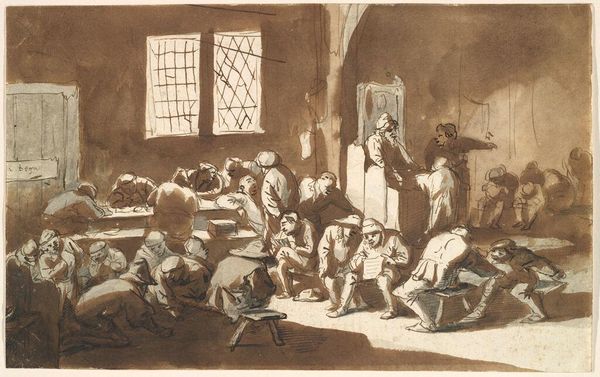
painting
#
narrative-art
#
dutch-golden-age
#
painting
#
figuration
#
genre-painting
#
monochrome
#
realism
#
monochrome
Dimensions: 82 cm (height) x 109 cm (width) (Netto)
Editor: This is *Peasants' Wedding*, likely painted sometime between 1640 and 1679. It's anonymous, so we don't know who painted it. Looking at this monochrome painting, you immediately feel immersed in the festivities. The figures seem alive and jovial despite the limited palette. How does this portrayal of peasant life reflect broader social dynamics of the time? Curator: That's a crucial question. These genre paintings gained popularity during the Dutch Golden Age. Artists started depicting everyday scenes of ordinary people. However, we have to be critical of assuming these are simple depictions of "reality." Editor: In what way? Curator: Consider the art market. Who commissioned and purchased these works? These paintings often idealized peasant life for urban audiences. Were they romanticizing rural life, or reinforcing social hierarchies through representation? Notice the emphasis on merriment and the detailed rendering of objects. How do you think these details functioned for the painting's original audience? Editor: Maybe they were showcasing a vision of stability and tradition, contrasting it with the changes happening in the cities? Also, wouldn't portraying peasants as purely jovial effectively gloss over any socio-economic disparity that may have been present at that time? Curator: Precisely! Think about how such representations helped shape the viewers' understanding of society and the role of each class within it. Editor: So, what appears as a charming depiction on the surface is deeply rooted in the socio-political framework of that period. I'll definitely view such genre paintings more critically going forward. Curator: Indeed. Understanding art through the lens of its social context allows for a richer and more nuanced appreciation.
Comments
No comments
Be the first to comment and join the conversation on the ultimate creative platform.

